It’s mid-March and lambing season is in full swing on Kilmullen Farm in Newcastle, Co Wicklow.
Owned by the Bourke family, Kilmullen Farm is one of the best-known sheep farms in Ireland.
For Eamon Bourke, the third generation of his family to farm at Kilmullen, March will be his busiest time of the year on the farm as he busies himself lambing down his flock of ewes.
However, the lambs born this spring on Kilmullen Farm will not go to the local meat factory.
Instead, these lambs are raised and fattened before they are ready to be butchered directly on the farm.
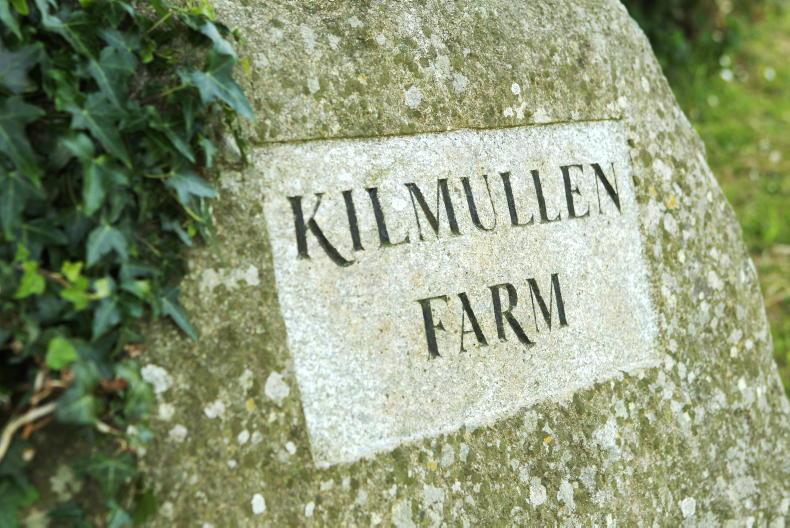
The Bourkes package and box their own lamb and have been selling direct to Irish consumers for 10 years.
Eamon’s wife Margaret is the driving force behind Kilmullen Farm’s direct-to-consumer food business and she’s very honest about the demands of this business model.
“There are plenty of times when I ask myself are we crazy to be doing what we’re doing,” says Margaret.
“We control absolutely everything in the process of producing our lamb. We raise, butcher and package all of the lambs. We do all of the marketing and transport and we pay the fees to have a spot at the farmer markets we go to,” she adds.
We control absolutely everything in the process of producing our lamb
Farming is a labour-intensive occupation at the best of times but selling your produce direct to the consumer can really add to the workload. It means taking on the role of farmer, processor, marketer, logistics specialist and sales agent all in one.
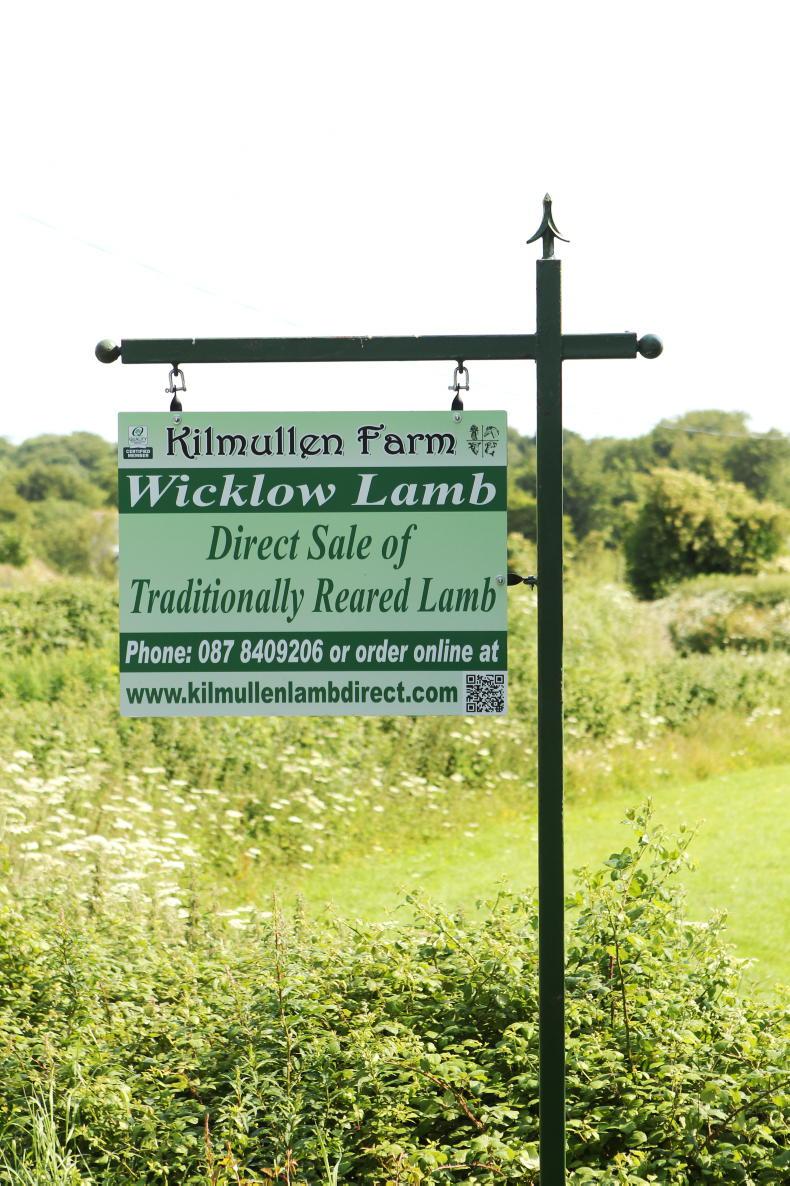
“We’re very open with our customers about pricing. Last year we charged €195 for a whole lamb and despite the exceptionally high factory prices this year, we are adding only a small increase. It will be based on weight with a 19kg lamb €190, €20kg €200 and so on.”
There will be very little premium this year to reflect all the extra work involved.
However, for the Bourke family, the direct-to-consumer model clearly provides other rewards that are much harder to measure.

Last year, the Bourkes charged €195 for a whole lamb and despite the exceptionally high factory prices this year, they are adding only a small increase.
“I just love and value the connection we have with our consumers. I get such a huge buzz from meeting our customers at the farmers’ market. At this stage, I know the individual preferences of many of them.
“There is a whole conversation that goes with each order of lamb. We get to share in their special occasions, the reason for the barbecue, we trade recipe tips and talk of life.
“These are the experiences you cannot put a price on,” says Margaret.
“So for me the rewards of this business model are twofold. It allows us to be the price-setter but there is definitely a lifestyle element to this because it allows us to connect with people.
“I’m so proud of the lamb cuts we produce and there’s a great thrill in the feedback you get from customers about your own produce,” she adds.
Pride
Many Irish farmers will identify with this pride in the food they produce but getting the direct feedback and interaction with the end consumer is obviously something few farmers ever get to experience.
Direct selling to consumers via farmers’ markets and local supply chains is still relatively niche in Ireland.
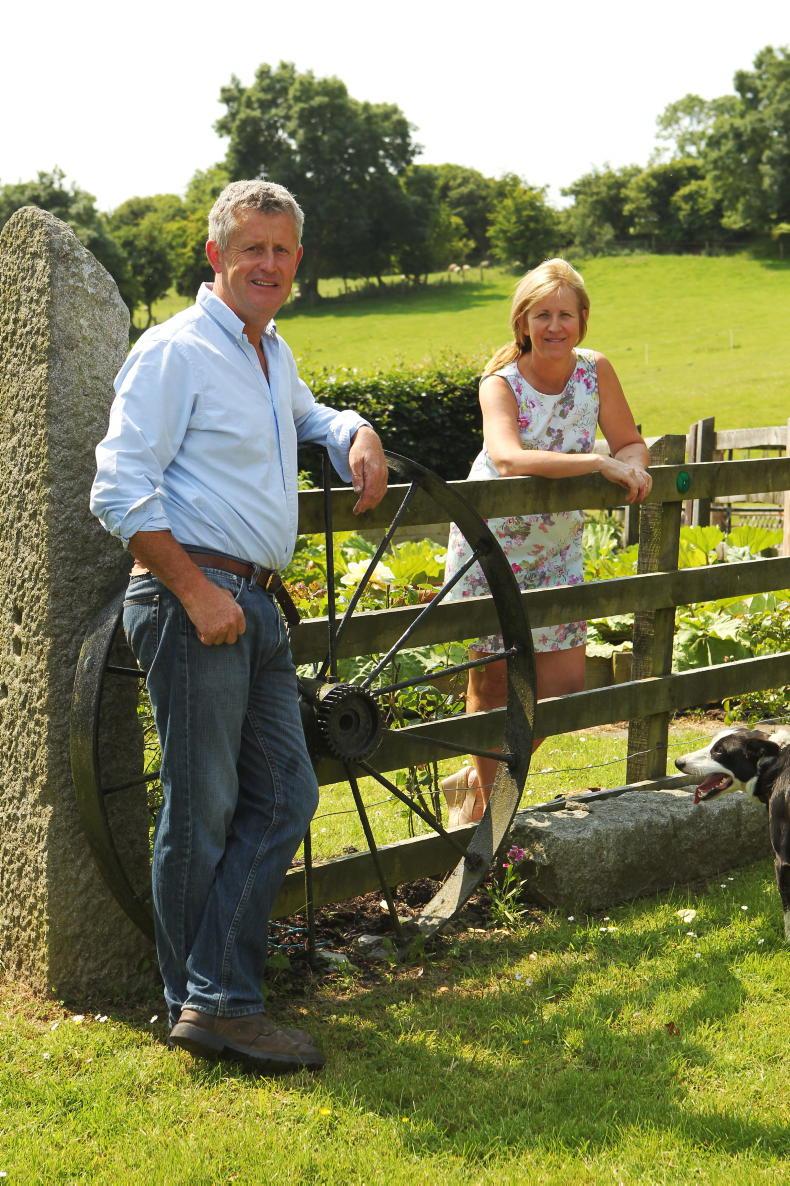
Eamon and Margaret Bourke.
Given Ireland’s small population and the food sector’s focus on supplying global export markets, the majority of farmers supply their produce to the local co-op or meat processor.
In contrast, the prevalence of short food supply chains in many European countries is much higher.
According to a 2016 report by the European Parliament, about 15% of EU farms sell more than half their produce directly to consumers.
Greece is the EU member state where direct-selling to consumers is most prevalent, with 25% of all farms selling at least half their production direct to consumer. In France, 21% of farmers sell at least half of their produce direct to the consumer or within short food supply chains.
In contrast, less than 5% of Irish farmers sell some of their produce directly to the consumer or within very short supply chains.
Given the persistently low incomes for most Irish farmers, particularly in beef and sheep enterprises, many commentators believe very short supply chains or the direct to consumer business model is the solution for Irish farmers seeking to earn a better income from their farm.
By bypassing the processors, retailers and various other middle men dotted throughout the food supply chain, they argue farmers will be able to set their own prices for their produce and make a sustainable return for their products, just like the Bourke family.
However, a new report by Agriculture Stratégies, a French think-tank on agriculture and food policy, reveals short supply chains are not delivering the superior returns for farmers that might be expected.
According to the report, direct selling to consumers does allow farmers to get a premium sales price for their produce, albeit there is a ceiling on how much any consumer is willing to pay for food given the competitiveness of the sector.
Despite the available premiums, the report concludes that most of the higher sales price is consumed in the increased production, transport and marketing costs for the farmer, which the consumer does not see.
Alessandra Kirsch is a director of research at the Agriculture Stratégies think-tank and author of the report. Speaking to the Irish Farmers Journal, Kirsch says that there is a perception that direct-selling to consumers or very short supply chains are the solution to the income challenges in farming.
However, she says this perception ignores the increased costs placed on the farmer, not to mention the added labour required to produce, process, package and then sell the food.
French study
As part of her study into this area, Kirsch analysed the profitability of a number of French beef farmers who were selling beef direct to consumers (Table 1).
Her research shows these beef farmers were able to achieve a sales price of €12.16/kg of meat from selling direct to consumers, which is a little under €4,200 for a 500kg carcase animal.
Based on the French beef price of €3.75/kg this year, the farmer would have taken home just under €1,900 if he/she had sold the animal directly to the factory. So on a turnover basis, direct selling looks impressive.
However, when the extra costs of the business model are included, the added value is much less. Kirsch’s research shows the additional cost to these farmers to process, package, transport and market their own beef was just over €1,600, or €3.25/kg, per animal on average.
Additional costs
Once all the additional costs are included, French farmers who operate a direct-to-consumer business model make an extra €500/head, which is less than an extra €1/kg on their base beef price if they had sold the animal directly to a factory.
And while a €1/kg price increase is not to be dismissed in the beef sector, it is important to note how much extra workload and effort is required on the part of the farmer to achieve it.
“In agriculture, the question of working time is often overlooked by farmers as many of them never count the cost of their own labour,” says Kirsch.
“This is a common trait among farmers because they are passionate about what they do. They do not see it as a profession where you count your hours,” she adds.
In agriculture, the question of working time is often overlooked by farmers as many of them never count the cost of their own labour
Kirsch says French consumers who buy directly from farmers are willing to pay some level of a premium but they still expect food to be priced broadly similar to what they would pay in a supermarket given the elimination of middle men in the supply chain.
Cheaper
In many cases, she says, many consumers believe food they buy directly from farmers should be cheaper than in the supermarket because they think there are less people taking a cut along the chain.
“Consumers do not see the increased workload, production costs and risks for the farmer in this model so their willingness to pay a premium is limited,” says Kirsch.
“Many consumers ignore the economies of scale in the modern food industry which makes food so affordable,” she adds.
Like the Bourke family in Co Wicklow, farmers right across Europe engage in the direct-to-consumer business model because they enjoy the connection with the consumer and having control of their own business.
Volumes
However, the volumes sold via direct-selling or local supply chains will always be small. In Brussels, the current European Commissioner for Agriculture and Rural Development Janusz Wojciechowski repeatedly talks up the merits of local supply chains as the solution to weak farm incomes across Europe.
Kirsch rejects this idea and says European farmers should not be forced down this road as a perceived solution to low farm incomes, especially with all the increased costs and risks that come with it.
“The EU is not showing the courage needed to tackle the real problems with farm incomes.
“The real job to be done here is to make the main food supply chain work. Forcing farmers to work even harder for a small premium in order to make a living is not the answer,” says Kirsch.
“In France, we have a new law which is designed to stop food being sold for prices below the cost of production.
“But French supermarkets don’t want to increase the price of food for their consumers so this law is having little impact. The only area it seems to be working is for the price of milk,” she says.
Consumer label
France has also introduced a new consumer label on certain food items which reads “C’est qui le Patron?” or “Who’s the boss?” in English.
The aim of this new label is to try to empower French consumers to choose food products with this label, which guarantees a fair share of the price goes direct to the primary producer.
Kirsch says there needs to be more initiatives like this to try to solve the problems in the traditional food supply chain instead of telling farmers they must invest in a direct selling business model.
The EU has made a start to tackling this incredibly complex problem by introducing a directive on unfair trading practices.
However, there is still a long road to travel before equilibrium is restored in food pricing.
Affordable food
Affordable food is hugely important for the 500m consumers that live in Europe.
Yet a balance has to be found between affordability for the consumer and sustainability for the farmer.
Otherwise, the family farm model of food production in Europe will struggle to survive for much longer.
Direct sales from farm to consumer creates a premium but adds a huge workload with processing, marketing and logistics.Report by French think-tank shows that short supply chains aren’t the answer to the farm incomes problem.Value of time spent working is often overlooked as many farmers don’t count the cost of their labour.
It’s mid-March and lambing season is in full swing on Kilmullen Farm in Newcastle, Co Wicklow.
Owned by the Bourke family, Kilmullen Farm is one of the best-known sheep farms in Ireland.
For Eamon Bourke, the third generation of his family to farm at Kilmullen, March will be his busiest time of the year on the farm as he busies himself lambing down his flock of ewes.
However, the lambs born this spring on Kilmullen Farm will not go to the local meat factory.
Instead, these lambs are raised and fattened before they are ready to be butchered directly on the farm.

The Bourkes package and box their own lamb and have been selling direct to Irish consumers for 10 years.
Eamon’s wife Margaret is the driving force behind Kilmullen Farm’s direct-to-consumer food business and she’s very honest about the demands of this business model.
“There are plenty of times when I ask myself are we crazy to be doing what we’re doing,” says Margaret.
“We control absolutely everything in the process of producing our lamb. We raise, butcher and package all of the lambs. We do all of the marketing and transport and we pay the fees to have a spot at the farmer markets we go to,” she adds.
We control absolutely everything in the process of producing our lamb
Farming is a labour-intensive occupation at the best of times but selling your produce direct to the consumer can really add to the workload. It means taking on the role of farmer, processor, marketer, logistics specialist and sales agent all in one.

“We’re very open with our customers about pricing. Last year we charged €195 for a whole lamb and despite the exceptionally high factory prices this year, we are adding only a small increase. It will be based on weight with a 19kg lamb €190, €20kg €200 and so on.”
There will be very little premium this year to reflect all the extra work involved.
However, for the Bourke family, the direct-to-consumer model clearly provides other rewards that are much harder to measure.

Last year, the Bourkes charged €195 for a whole lamb and despite the exceptionally high factory prices this year, they are adding only a small increase.
“I just love and value the connection we have with our consumers. I get such a huge buzz from meeting our customers at the farmers’ market. At this stage, I know the individual preferences of many of them.
“There is a whole conversation that goes with each order of lamb. We get to share in their special occasions, the reason for the barbecue, we trade recipe tips and talk of life.
“These are the experiences you cannot put a price on,” says Margaret.
“So for me the rewards of this business model are twofold. It allows us to be the price-setter but there is definitely a lifestyle element to this because it allows us to connect with people.
“I’m so proud of the lamb cuts we produce and there’s a great thrill in the feedback you get from customers about your own produce,” she adds.
Pride
Many Irish farmers will identify with this pride in the food they produce but getting the direct feedback and interaction with the end consumer is obviously something few farmers ever get to experience.
Direct selling to consumers via farmers’ markets and local supply chains is still relatively niche in Ireland.

Eamon and Margaret Bourke.
Given Ireland’s small population and the food sector’s focus on supplying global export markets, the majority of farmers supply their produce to the local co-op or meat processor.
In contrast, the prevalence of short food supply chains in many European countries is much higher.
According to a 2016 report by the European Parliament, about 15% of EU farms sell more than half their produce directly to consumers.
Greece is the EU member state where direct-selling to consumers is most prevalent, with 25% of all farms selling at least half their production direct to consumer. In France, 21% of farmers sell at least half of their produce direct to the consumer or within short food supply chains.
In contrast, less than 5% of Irish farmers sell some of their produce directly to the consumer or within very short supply chains.
Given the persistently low incomes for most Irish farmers, particularly in beef and sheep enterprises, many commentators believe very short supply chains or the direct to consumer business model is the solution for Irish farmers seeking to earn a better income from their farm.
By bypassing the processors, retailers and various other middle men dotted throughout the food supply chain, they argue farmers will be able to set their own prices for their produce and make a sustainable return for their products, just like the Bourke family.
However, a new report by Agriculture Stratégies, a French think-tank on agriculture and food policy, reveals short supply chains are not delivering the superior returns for farmers that might be expected.
According to the report, direct selling to consumers does allow farmers to get a premium sales price for their produce, albeit there is a ceiling on how much any consumer is willing to pay for food given the competitiveness of the sector.
Despite the available premiums, the report concludes that most of the higher sales price is consumed in the increased production, transport and marketing costs for the farmer, which the consumer does not see.
Alessandra Kirsch is a director of research at the Agriculture Stratégies think-tank and author of the report. Speaking to the Irish Farmers Journal, Kirsch says that there is a perception that direct-selling to consumers or very short supply chains are the solution to the income challenges in farming.
However, she says this perception ignores the increased costs placed on the farmer, not to mention the added labour required to produce, process, package and then sell the food.
French study
As part of her study into this area, Kirsch analysed the profitability of a number of French beef farmers who were selling beef direct to consumers (Table 1).
Her research shows these beef farmers were able to achieve a sales price of €12.16/kg of meat from selling direct to consumers, which is a little under €4,200 for a 500kg carcase animal.
Based on the French beef price of €3.75/kg this year, the farmer would have taken home just under €1,900 if he/she had sold the animal directly to the factory. So on a turnover basis, direct selling looks impressive.
However, when the extra costs of the business model are included, the added value is much less. Kirsch’s research shows the additional cost to these farmers to process, package, transport and market their own beef was just over €1,600, or €3.25/kg, per animal on average.
Additional costs
Once all the additional costs are included, French farmers who operate a direct-to-consumer business model make an extra €500/head, which is less than an extra €1/kg on their base beef price if they had sold the animal directly to a factory.
And while a €1/kg price increase is not to be dismissed in the beef sector, it is important to note how much extra workload and effort is required on the part of the farmer to achieve it.
“In agriculture, the question of working time is often overlooked by farmers as many of them never count the cost of their own labour,” says Kirsch.
“This is a common trait among farmers because they are passionate about what they do. They do not see it as a profession where you count your hours,” she adds.
In agriculture, the question of working time is often overlooked by farmers as many of them never count the cost of their own labour
Kirsch says French consumers who buy directly from farmers are willing to pay some level of a premium but they still expect food to be priced broadly similar to what they would pay in a supermarket given the elimination of middle men in the supply chain.
Cheaper
In many cases, she says, many consumers believe food they buy directly from farmers should be cheaper than in the supermarket because they think there are less people taking a cut along the chain.
“Consumers do not see the increased workload, production costs and risks for the farmer in this model so their willingness to pay a premium is limited,” says Kirsch.
“Many consumers ignore the economies of scale in the modern food industry which makes food so affordable,” she adds.
Like the Bourke family in Co Wicklow, farmers right across Europe engage in the direct-to-consumer business model because they enjoy the connection with the consumer and having control of their own business.
Volumes
However, the volumes sold via direct-selling or local supply chains will always be small. In Brussels, the current European Commissioner for Agriculture and Rural Development Janusz Wojciechowski repeatedly talks up the merits of local supply chains as the solution to weak farm incomes across Europe.
Kirsch rejects this idea and says European farmers should not be forced down this road as a perceived solution to low farm incomes, especially with all the increased costs and risks that come with it.
“The EU is not showing the courage needed to tackle the real problems with farm incomes.
“The real job to be done here is to make the main food supply chain work. Forcing farmers to work even harder for a small premium in order to make a living is not the answer,” says Kirsch.
“In France, we have a new law which is designed to stop food being sold for prices below the cost of production.
“But French supermarkets don’t want to increase the price of food for their consumers so this law is having little impact. The only area it seems to be working is for the price of milk,” she says.
Consumer label
France has also introduced a new consumer label on certain food items which reads “C’est qui le Patron?” or “Who’s the boss?” in English.
The aim of this new label is to try to empower French consumers to choose food products with this label, which guarantees a fair share of the price goes direct to the primary producer.
Kirsch says there needs to be more initiatives like this to try to solve the problems in the traditional food supply chain instead of telling farmers they must invest in a direct selling business model.
The EU has made a start to tackling this incredibly complex problem by introducing a directive on unfair trading practices.
However, there is still a long road to travel before equilibrium is restored in food pricing.
Affordable food
Affordable food is hugely important for the 500m consumers that live in Europe.
Yet a balance has to be found between affordability for the consumer and sustainability for the farmer.
Otherwise, the family farm model of food production in Europe will struggle to survive for much longer.
Direct sales from farm to consumer creates a premium but adds a huge workload with processing, marketing and logistics.Report by French think-tank shows that short supply chains aren’t the answer to the farm incomes problem.Value of time spent working is often overlooked as many farmers don’t count the cost of their labour. 









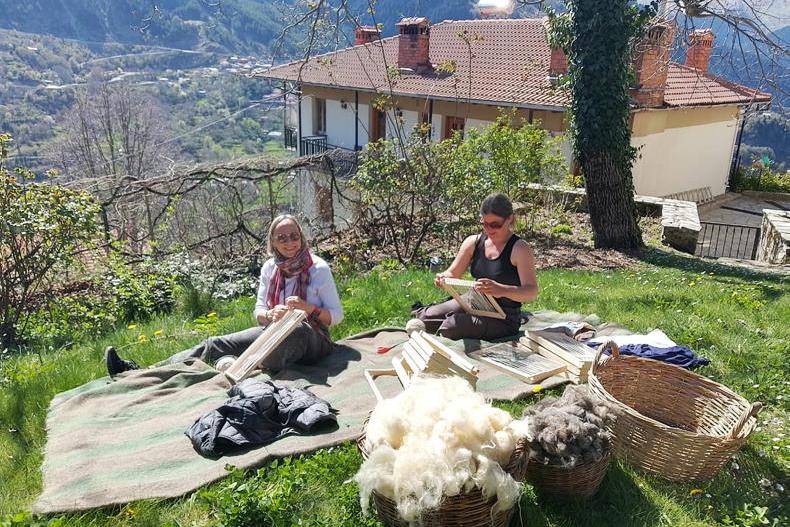

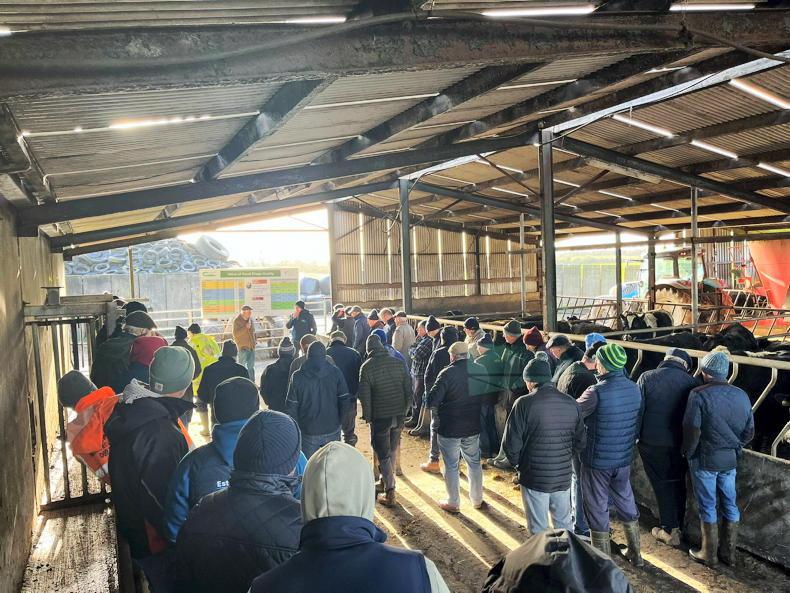
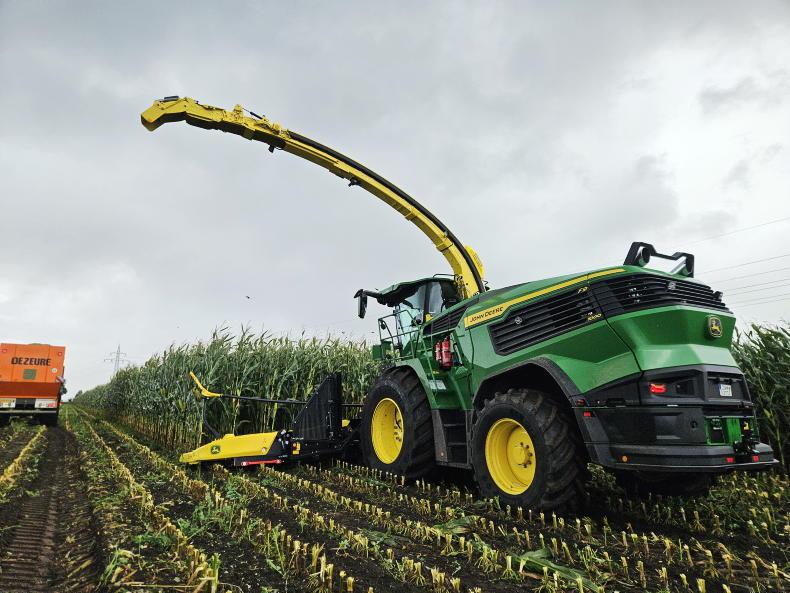

SHARING OPTIONS